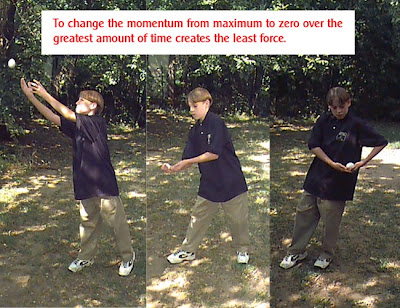Frank Sauce
This blog entry is a response to some comments made at my blog entry displaying the similar triangles poem titled “The Lotto”
Frank,
I appreciate you stopping by and I enjoy engaging your comments in some discussion even though you didn’t really leave much behind. I took the liberty to stop by your blog to try to understand your point of view in order to decipher your comments. I am going to assume from your blog entry, concurrent with your comments on my blog, that you are frustrated with the attention given to Ron Silliman’s idea of torque in poetry as well as being annoyed with my blog posting of a way to look at 'torque in poetry'. (Please notice I said 'a' way not 'the' way) Furthermore it seems that Ron's blog brought you to mine.
Your first comment was, “mathematics is objective”
I now ask you to notice the analytic geometrical equation for a circle “x squared plus y squared equals the radius squared.”
I think where you and many others may be having trouble is that you have never seen applied mathematics used for connotation. Therefore it does not exist. I ask you to slow down for a moment and ask why not? I find this argument to be the same as someone who believes that a child should always stay inside the lines while coloring in a coloring book. Thinking that a mathematical equation must be used only for denotation is a paradigm that mathematical poets want to shatter. The equation is merely a logical structure that can be used for anything including metaphor.
After reading your blog entry I think I see another problem that you may have. It seems that when you see mathematics you automatically think “science”, “definitions”, and “laws”. I think it is safe to say that ‘mathematical poets’ have no more use for these terms than traditional language poets. (No less use as well) My work in particular may express something within a logical framework and it may even be philosophical however; it is not and was never intended to be science. I will say it again, “mathematics is merely a language.”
Your next comment was, “this poem is subjective”
Yes however, as I pointed out Pure math is subjective as well.
Your next comment was, “the symbols are obvious and cliché “
You really haven’t given me much to work with so I have decided to address this in two ways. My first response will assume that you fully understand the logic and the aesthetics in the mathematical structure of the poem. My second response will assume that you do not understand the logic nor the aesthetics employed in the structure.
My first response:
You have actually illuminated one of the difficulties when choosing the descriptive elements in a mathematical poem. The more literal the words used in the poem then the more clear and readable the intention becomes, yet one always runs the risk of being cliché. Of course this can be said in traditional poetry as well for you can become so narrow in your attempt at being descriptive that you become cliché. Because mathematical poetry is so new to many I have decided in many cases to focus on the beauty in the mathematical relationships between the elements as opposed to the verbal expressions within that structure. Many times I place a pedagogical spin to a poem in hope of spawning interest. However, here is a case where it may have backfired.
My second response:
Since you don’t understand the mathematical language it is really difficult to take your response to heart. It is much like listening to a person passing judgment on French poetry while not knowing the French language.
The poem "The Lotto" where you left your comment has the structure of what I call the similar triangles poem. My next blog entry will be dedicated to illuminating the structure of the similar triangles poem such as the one discussed in this blog entry.






